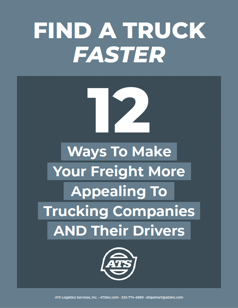Good transportation companies strive to make the lives of their customers easier with each transaction. This is done by tapping into the unique needs of every business, addressing each pain point they feel and taking steps to ensure things go smoothly from start to finish.
Over the years, transportation providers have done this in various ways, usually through scheduled phone call updates and various email check-ins. Today, though, giving shippers visibility and access to vital information concerning their freight’s journey has never been easier.
Although great providers still connect with customers in more personal ways — using phone calls, meetings and emails — new technologies have made a marked impact on this process.
Customer portals — for the companies that offer them — help to streamline communication across all stakeholders and ensure that nothing is left to chance.
That said, due to the sizable investment that offering a top-of-the-line customer portal requires of transportation companies, not all of them are created equally. Which begs the question, “What should you look for in the portal offered by your next provider?” And, more importantly, “Is there anything portal-related that you’re missing out on in your current partnerships?”
Let’s find out.
Here at ATS, we offer industry-leading customer experiences via our own customer portal. Through its development, implementation and continuous optimization we’ve come to recognize the fundamental things that a customer portal must have to truly benefit the individuals looking to use it.
The more information you have access to at the touch of a button, the better off your business, budget and supply chain will be. In this article, we’ll outline the five things that every great customer portal should offer shippers and give you some insight into what your life could look like with access to a great one!
What Should Every Great Customer Portal Have?
Every shipment is like a complex organism; everything is interconnected and, often, the failure of a single thing impacts the health and wellbeing of the whole. Even the slightest hiccup in communication, be it a forgotten delivery detail or an inaccurately quoted initial rate, can wreak havoc on the success of a shipment.
That said, with a good customer portal in place, the frequency of these issues usually subsides substantially. But what makes a customer portal effective and what should you look forward to when working with a provider that has one?
The five most impactful things that every transportation portal must have are:
- Easy access to all transactional and shipment documents.
- Quick-access load-tracking visibility.
- Historical data for you to reference.
- Comprehensive report-running capabilities.
- Interactive pricing calculators (where possible).
Sometimes, the value of these five features isn’t immediately evident — especially to those shippers that haven’t had access to a customer portal before. To illustrate this value, let’s continue by outlining these properties in a bit more detail.
1. Easy-Access Shipping and Transactional Documents
Look, keeping your supply chain on track isn’t simple; ensuring its successful fulfillment takes commitment, organization, inter-business cooperation and . . . a lot of paperwork.
With so many other things to worry about, it’s not unusual for an important “hard copy” to get misplaced or lost in the shuffle. Good transportation-industry customer portals are designed to solve this issue.
On these platforms, the best providers house the most up-to-date versions of each crucial document. This helps these companies keep a permanent record of every transaction and grant easy access to any customer looking to obtain all of the documentation they need.
When you work with a provider that has a well-kept customer portal, you’ll gain immediate access to every document necessary for record-keeping and accounting purposes.
The documents housed on these customer portals include but aren’t limited to:
- The bill of lading(s) associated with each load.
- All requested proof of delivery paperwork.
- Comprehensive invoice documents.
In the end, with this digital library to lean on, shippers are given peace of mind in knowing that their business is valued and their paperwork is in order — with minimal effort on their end.
2. Quick-Access Load Tracking Visibility
Load tracking capabilities matter to a whole lot of shippers across a whole lot of industries. And why wouldn’t it? The ability to monitor your freight’s progress from the moment it leaves your door until it reaches your consignee can be hugely impactful.
Not only does this information make it easier for you to plan for its arrival, but knowing that your transportation provider can step in should a delay occur, find a solution when necessary and reach out to your customers to arrange a new drop-off time, lifts this same burden from your shoulders.
This is one of the most fundamental functions of a great customer portal. To give shippers the in-transit visibility they want — the kind of visibility that was impossible before the digital age — good transportation companies make online load-tracking a foundational perk of working with them.
And, as soon as you become a customer with the right partner, you’ll get immediate access to this information too.
3. Historical Data For You to Reference
History is a funny thing. Yesterday is history right now, today is tomorrow’s and no matter how hard you try, the days of “history” keep piling up. Every once in a while, however, it’s important to take a step back, analyze trends, weigh performance and reflect on past transactions so that you can optimize into the future.
Many customer portals give companies, like yours, the opportunity to do just that.
Within these systems, good transportation portals house information regarding past transactions, load count histories and chronological pricing trends for shippers.
This helps these businesses plan for the future, weigh projected transportation spending against that of the past and evaluate the performance of each provider against others.
4. Comprehensive Report Running Capabilities
The fourth fundamental function (haha, alliteration) on this list dances hand in hand with that aforementioned historical data.
You see, to give shippers as much value as possible in a customer portal, the best providers give them access to analytical tools to utilize based on the data collected within their systems.
This software — although expensive to implement initially — gives shippers the ability to graphically interpret and compare each interaction their business has had with their provider.
Some of these reporting features, offered as pie charts, line graphs and/or bar graphs — depending on your preference — are:
- Breakdowns of dollars spent by service type.
- Reports depicting historical spending by period (week, month).
- Analysis of total shipments delivered per day, week, month, etc.
- Record of dollars spent per period.
In the end, these reports help shippers make the most educated decisions as possible for the future movement of their freight at the touch of a button.
5. Interactive Pricing Calculators
Quoting a freight shipment on the spot using digital algorithms and software is difficult. There are a ton of factors that individually contribute to the final freight rate a company is quoted for its shipment.
As a result, it’s not possible to price many kinds of shipments (such as heavy haul, international and flatbed loads) without involving a transportation expert.
That said, instantly quoting less-than-truckload shipments — that have prices calculated based on freight class and size — is a bit easier. Great portals, let shippers request an exact price for their LTL freight on the spot, which removes a lot of barriers from this process.
Beyond LTL freight, many customer portals let current customers submit quote requests for full truckload quantities instantly. Although they don’t give an exact price right away for larger loads, portals with these features help shippers secure a solution in a timely and cost-effective manner.
What Are the True Benefits of a Great Customer Portal?
Now that you understand the five things you should expect to receive when working with a provider that has a great customer portal, let’s talk about the true upsides of doing so.
Moving your freight with a provider that has an excellent customer portal experience, will help you avoid many of the mishaps that frequently accompany the freight transport process.
You see, when used to their full potential, these portals become an extension of each shipper-provider relationship, cutting down communication barriers and helping them avoid unnecessary issues.
Most specifically, you’ll enjoy these portals as they:
- Help to Ensure All Important Details Are Accurate.
- Help Shippers Gain Efficiencies.
- Open a Direct Line of Communication Between Stakeholders.
1. Help to Ensure All Important Details Are Accurate
Every shipment is unique; quantities change, origin and destination locations shift, timelines differ and accessorial requirements are rarely consistent. As such, when it’s time for your shipment to find a solution, you’ll want to make sure even the most minute details are clearly and accurately relayed to your provider.
Too often, loads face delays and failures because a piece of crucial information got lost in communication along the way. Customer portals help to solve this issue.
Instead of forcing you to rely on a single phone call or an email’s ability to ensure everything is communicated correctly, these portals allow you to check in on documentation and load details promptly after your freight is handed off to a transportation company.
In turn, you’ll fall victim to human error less frequently as stepping in when you see an error with your load as it’s posted online is quick and easy.
2. Help Shippers Gain Efficiencies
You have a lot going on. Your transportation partner has a lot going on. In today’s world, everyone is busy. By using a customer portal, however, this won’t impact your supply chain — no matter how hectic things become.
Instead of having to reach out for important updates on a shipment’s location, or for some documentation you’re missing, all of this information is easily accessible via a desktop computer or mobile device.
In turn, this will help you gain efficiencies both internally and externally as the oversight and control you have over every aspect of your transportation supply chain increases exponentially.
3. Opens a Direct Line of Communication Between Stakeholders
The final upside of working with a provider that boasts a top-of-the-line customer portal is that these systems make it easier to facilitate clear communication and universal understanding between stakeholders.
For you, this means that the confusion and visibility issues — between shippers their carrier and the final consignees — that plague many shipments, won’t impact yours.
Instead of needing to open and maintain multiple lines of communication on multiple sides — be it a phone call to your receiver here or an email to your provider there — customer portals are a perfect conduit for asynchronous communication.
By giving access to the tracking data collected in your transportation portal to your customers, everyone will be on the same page at all times. And, should your customer need to make a last-minute adjustment, communicating this to your transportation partner will be far easier with the help of a great customer portal.
Let’s Find Your Next Truck Faster
Now that you understand the fundamental components of a great transportation industry customer portal — and what advantages come with utilizing one — let’s talk about something that’s just as important: Your ability to find a truck, when and where you need it.
Too many good shippers, just like you, struggle to find reliable transportation capacity — especially on short notice.
Here at ATS, we’re looking to help you past this issue. And, even though our customer portal does an excellent job at making shippers’ lives easier, this 12 Step Guide to Finding a Truck Faster has been even more impactful.
Moving freight doesn’t need to soak up your valuable time or an unproportionate amount of your quarterly budget. Download this free guide today and wave goodbye to issues finding a truck — at competitive price points — in the future.





